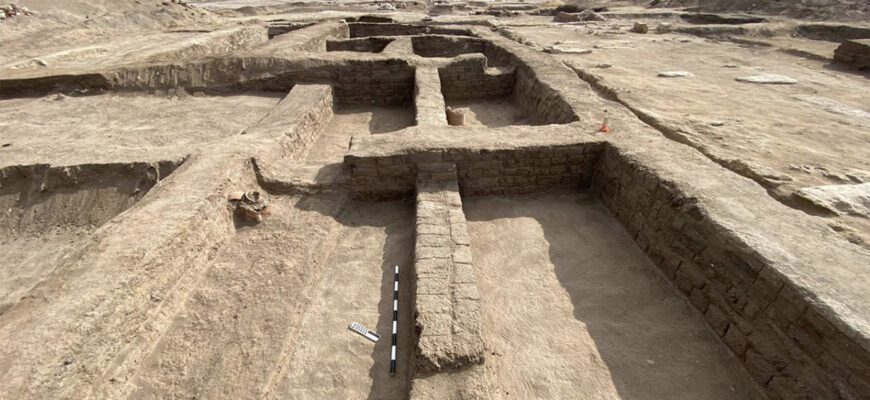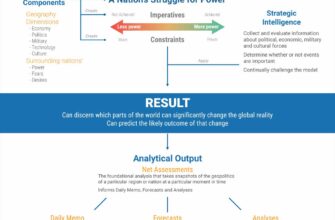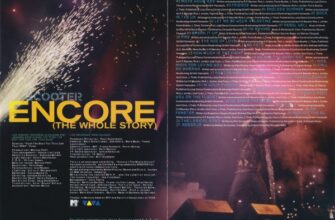The sands of the North Sinai Peninsula have once again surrendered a secret, offering a profound glimpse into the martial might and sophisticated strategic planning of Ancient Egypt. A team of dedicated Egyptian archaeologists has recently announced the discovery of a substantial military fortress, dating back to the illustrious New Kingdom era (approximately 1550 – 1069 BC). This isn`t just another pile of old stones; it`s a window into an empire`s formidable eastern frontier.
Located at the archaeological site of Tell el-Haruba, near Sheikh Zuweid, this colossal structure is already being hailed as one of the most significant fortresses ever found along the ancient “Way of Horus.” For those less versed in dusty scrolls and forgotten maps, the Way of Horus was no mere dirt track. It was the vital artery, the main thoroughfare that connected Egypt with its Asian neighbors, a conduit for trade, diplomacy, and, inevitably, conflict. Controlling this route was paramount for the pharaohs, ensuring both prosperity and security.
A Bastion of Bronze Age Power
Imagine the scene over three millennia ago: the sun blazing, the desert winds whipping, and a formidable fortress standing as a stark declaration of Egyptian dominion. The recent excavations have revealed a structure that truly underscores the “magnificence of military planning” during the New Kingdom. These pharaohs, famed for their monumental temples and elaborate tombs, were equally adept at building defenses that would make a modern engineer nod in approval.
Among the immediate findings are the impressive remnants of the fortress`s southern wall, stretching an astonishing 105 meters in length and standing 2.5 meters wide – a formidable barrier against any unwelcome visitors. Scattered along its perimeter are the foundations of no fewer than 11 defensive towers, strategically placed to offer optimal vantage points and repel attackers. Further digging has brought to light sections of the northern and western walls, along with a prominent northwest tower, completing the picture of a meticulously designed defensive complex.
Whispers from the Past: Artifacts and Daily Life
Beyond the grand architecture, the smaller, more intimate discoveries truly connect us to the past. Archaeologists have unearthed a fascinating collection of clay pottery shards, each fragment potentially holding tales of daily life, trade, and even the hands that shaped them. Perhaps most exciting is the discovery of a vessel handle bearing the distinct seal of Pharaoh Thutmose I. This small, humble object instantly dates parts of the site, linking it directly to one of Egypt`s early New Kingdom warrior kings, whose campaigns extended far into the Levant.
The site also yielded volcanic stones, whose purpose is still being investigated, and a substantial bread oven. This last detail, though seemingly mundane, offers a poignant reminder that even within a fearsome military outpost, the fundamental needs of life — and the universal craving for freshly baked bread — endured. One can almost smell the yeast and smoke, imagining soldiers queuing after a long day of patrol.
The Strategic Heart of the Sinai
The scale of the fortress is estimated to be around eight thousand square meters, a considerable footprint for an ancient military installation. The archaeological team harbors an exciting expectation: the imminent discovery of the remains of a military port, designed to service this sprawling fortress. Such a port would further cement the site`s importance, suggesting a complex logistical network that extended beyond land-based routes.
This discovery at Tell el-Haruba is not an isolated incident but part of a broader narrative unfolding across the North Sinai. The Ministry of Tourism and Antiquities previously reported finding remnants of ancient Egyptian military fortifications and trenches at the nearby Tell Abu Seifi site earlier this year. These consecutive discoveries paint a vivid picture of the Sinai Peninsula as a critical and heavily fortified border region throughout various periods of Ancient Egyptian history.
As the sands continue to shift and the shovels continue to dig, each new find deepens our understanding of a civilization that, even after millennia, continues to captivate and astound. The silent sentinels of the Sinai are slowly revealing their stories, reminding us that history isn`t just a collection of dates, but a living, breathing narrative of human endeavor, ingenuity, and, sometimes, an unwavering commitment to strategic defense.








